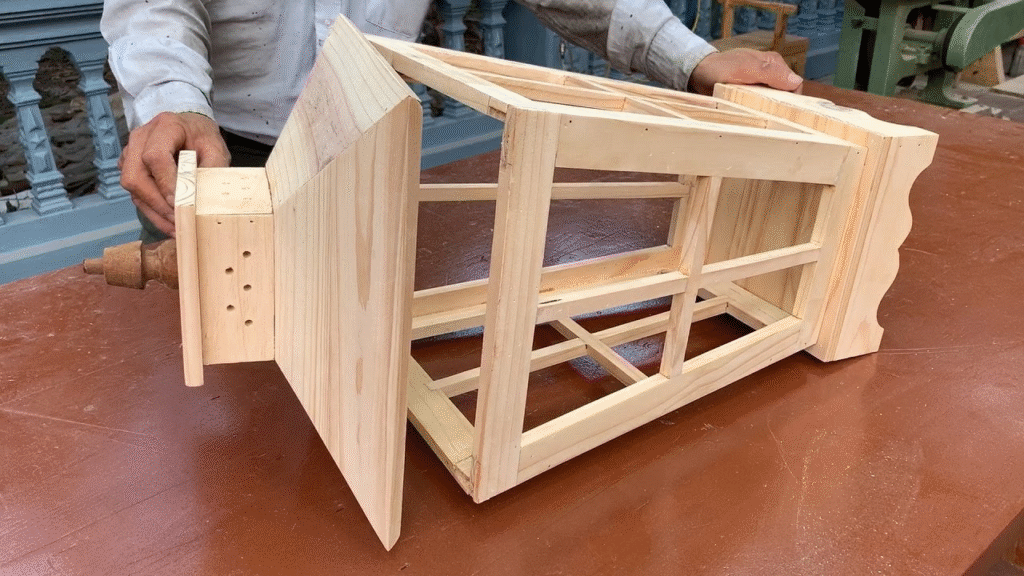Why Is Wooden Works Considered Timeless in Furniture Design?

Wooden furniture has long been celebrated as a hallmark of craftsmanship, durability, and aesthetic appeal. Across centuries and cultures, it has remained a favorite material for designers, architects, and homeowners. But what is it about wooden works that makes them timeless in furniture design? This article explores the enduring appeal of wood, its practical advantages, and its aesthetic and cultural significance.
The Historical Significance of Wood in Furniture
Wood has been used in furniture making for thousands of years. From the ornate chests of ancient Egypt to the elegant chairs of Victorian England, wood has consistently been chosen for its versatility and resilience. Early artisans recognized that different types of wood offered unique properties—some ideal for carving, others for structural support or intricate inlay work.
Historically, wooden furniture was not just utilitarian; it was a symbol of status and craftsmanship. The choice of wood and the complexity of the design often reflected the wealth and taste of the owner. Even today, wooden works evoke a sense of tradition and heritage that few other materials can match.
NOTE:- At Pleasant Carpentry, every Wooden Works project was executed flawlessly, highlighting artistry and attention to detail. The finished pieces received high appreciation for durability and elegance. Experience the craftsmanship that clients trusted. Contact Pleasant Carpentry now and bring your wooden dreams to life!
The Natural Beauty of Wood
One of the most compelling reasons wood remains timeless in furniture design is its natural beauty. Each piece of wood has a unique grain pattern, color variation, and texture, making every furniture item distinct. Unlike synthetic materials, wood carries the authenticity of nature, providing warmth and character to interior spaces.
Grain Patterns and Texture
- Oak, walnut, and mahogany offer rich, visible grains that add depth and sophistication.
- Maple and birch provide lighter, smoother textures suitable for modern minimalist designs.
The interplay of light on wood surfaces enhances its visual appeal, creating an ambiance that is both elegant and inviting. This intrinsic beauty allows wooden furniture to seamlessly complement various interior styles, from traditional to contemporary.

Durability and Longevity
Timeless design is not only about aesthetics; it also involves durability. Wooden furniture is known for its longevity, often lasting for decades or even centuries with proper care. Hardwood species, in particular, provide exceptional strength, making them suitable for load-bearing furniture like tables, beds, and cabinets.
Sustainability and Longevity
- Hardwood furniture can withstand daily wear and tear better than most materials.
- Properly treated and maintained wooden furniture develops a natural patina over time, enhancing its character and value.
This durability ensures that wooden furniture remains functional and stylish across generations, reinforcing its status as a timeless choice.
Versatility in Design
Wood is an incredibly versatile material, lending itself to a wide range of furniture styles and techniques. From hand-carved antique pieces to sleek, modern minimalistic designs, wood can adapt to the aesthetic demands of any era.
Carving and Joinery
Traditional woodworking techniques such as carving, mortise-and-tenon joints, and dovetail joinery allow artisans to create intricate designs that cannot be replicated easily with synthetic materials. These techniques not only add to the beauty but also enhance the structural integrity of the furniture.
Modern Applications
In contemporary furniture design, wood is often combined with other materials like metal, glass, or leather to create hybrid designs that balance warmth and modernity. This adaptability keeps wood relevant in evolving design trends, ensuring its continuous appeal.
Eco-Friendly and Sustainable Choice
In an era where sustainability is increasingly important, wooden furniture stands out as an eco-friendly option. Responsibly sourced wood from managed forests provides a renewable material for furniture making. Moreover, wood is biodegradable, reducing environmental impact compared to synthetic alternatives.
Benefits of Sustainable Wood
- Reduced carbon footprint due to natural growth and renewability.
- Potential for recycling and repurposing, extending the lifecycle of the material.
Consumers increasingly value eco-conscious choices, and wooden furniture allows designers to offer products that align with sustainability principles without compromising on aesthetics or durability.

Emotional and Cultural Connection
Wooden furniture often carries emotional and cultural significance. It is a medium through which stories are told—whether it is an heirloom passed down through generations or a handcrafted piece reflecting local artistry. The tactile experience of wood—its warmth, texture, and subtle scent—creates a sensory connection that synthetic materials cannot replicate.
Symbolism and Heritage
- Wood symbolizes stability, warmth, and reliability, qualities that are universally appreciated.
- Certain types of wood, like teak or cedar, are culturally significant in different regions, enhancing the furniture’s value beyond its material form.
This deep-rooted connection between humans and wood ensures its continued relevance in furniture design, making it a material that transcends trends and time.
Minimal Maintenance with Lasting Impact
Another factor contributing to the timeless appeal of wooden furniture is its low maintenance requirement. Regular dusting, occasional polishing, and protection from excessive moisture are often sufficient to preserve the furniture’s quality for years.
Aging Gracefully
Unlike materials that deteriorate or look outdated over time, wood develops a natural patina that adds character. Scratches, dents, and color changes are often considered part of its charm, reflecting the furniture’s history and usage.
Conclusion
Wooden works in furniture design are considered timeless because they combine beauty, durability, versatility, and cultural significance. From ancient craftsmanship to modern interiors, wood continues to offer unique aesthetic and functional benefits that synthetic materials often struggle to match. Its natural elegance, ability to adapt to diverse styles, and sustainable attributes ensure that wooden furniture remains a lasting choice for generations to come.
Investing in wooden furniture is not just about acquiring a piece of furniture; it is about embracing a tradition of artistry, quality, and enduring design that will remain relevant regardless of shifting trends. The timeless nature of wooden works lies not only in the material itself but also in its capacity to connect people with history, nature, and beauty.



